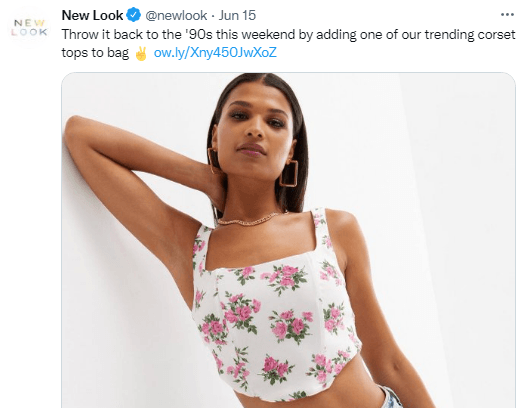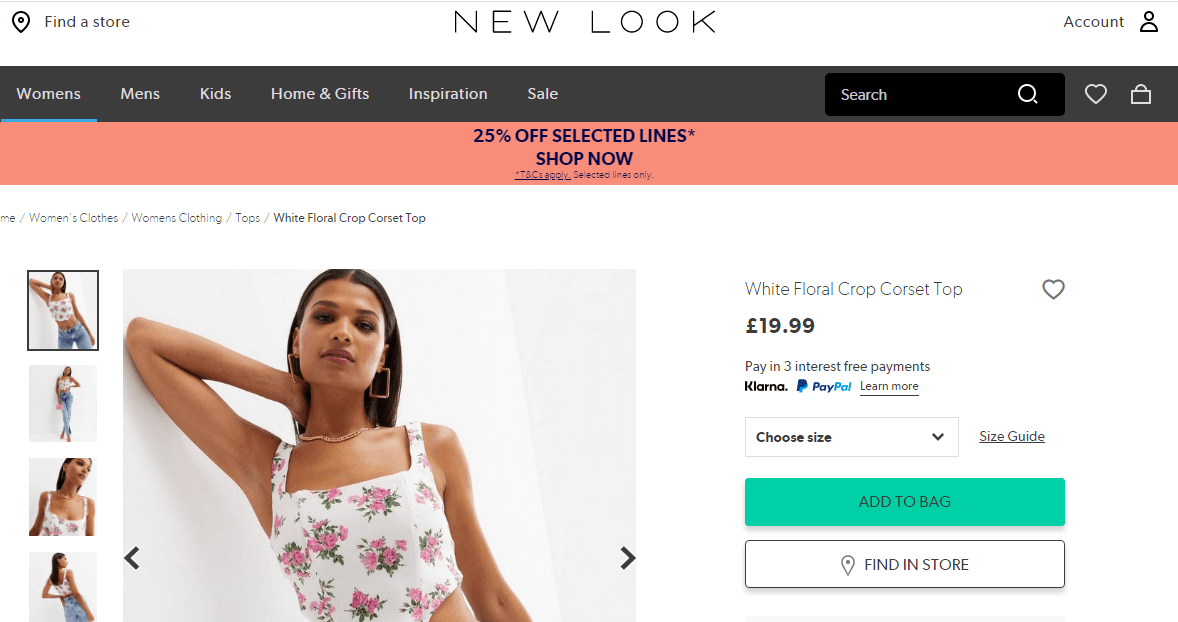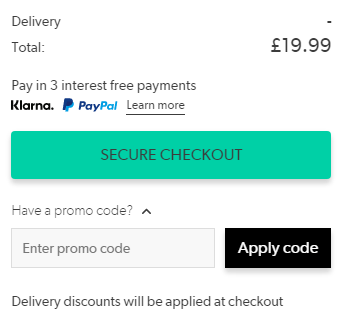-
 Published: Jul 3, 2022
Published: Jul 3, 2022
-
 8 min. read
8 min. read
-
 Abby Fields
Abby Fields Branded Content Specialist
Branded Content Specialist
- Abby is a data-driven content marketer with certifications in inbound marketing and content marketing. She’s written hundreds of articles covering digital marketing topics — a few of her specialties include first-party data, marketing and data analytics, marketing strategy optimization, and SEO. When she isn’t writing or optimizing content, Abby loves to spend time reading the latest mystery novel, having movie marathons with lots of snacks, and jamming out to Shania Twain.
What is closed-loop marketing? Closed-loop marketing is a marketing analysis strategy that uses data and insights to improve your return on investment (ROI). “Closing the loop” means your sales and marketing teams will work together to understand what happens to your leads.
Did you know that 63% of marketers don’t feel confident in effectively measuring how their marketing efforts impact their ROI?
If you fall into this percentage, we’ve got the perfect solution for you: closed-loop marketing, also called closed-loop attribution or closed-loop reporting.
Keep reading to learn more about how it can help your business earn a higher ROI!
Top tip: Want even more digital marketing advice from award-winning marketers? We’ve built a virtual filing cabinet of over 35 marketing guides just for you! Read our free marketing guides to learn how to drive more revenue with your marketing strategies today!

We’ve built out a virtual file cabinet with 35+ FREE marketing PDFs — just for you.
Explore Our Free Marketing GuidesWhat is closed-loop marketing?
Closed-loop marketing is a marketing analysis strategy that uses data and insights from your campaigns to improve your ROI. The “closed-loop” portion of the phrase refers to how your sales and marketing teams work together to report and track leads in an endless loop.
How closed-loop marketing works
So, how does closed-loop marketing work?
Closed-loop attribution works by tracking how your prospects arrive on your website and whether they convert into customers. We can break this process down into four steps:
- A visitor arrives on your website
- The visitor browses your website
- The visitor converts into a lead by completing a lead generation form
- The lead converts into a customer or client
Let’s break each step down into more detail below:
1. A visitor arrives on your website
When a visitor arrives on your website, it’s the entry point of your closed-loop cycle. You’ll want to track where your visitors arrive from at this stage.
Users can visit your website from various sources, including:
- Your social media page
- Search engines like Google
- Your pay-per-click (PPC) ad
- And more

You can analyze which marketing strategies drive the most traffic when you track how visitors arrive on your website. Additionally, as your visitors convert into leads and eventually customers, you can attribute those conversions to the correct marketing channel.
2. The visitor browses your website
After visitors arrive on your website, they begin browsing your pages and reading your content. In some cases, they might immediately leave your website without interacting with any of your pages.

Tracking your visitors’ behavior on your website is essential to identify any areas and pages that need improvement.
For example, you might notice that many visitors leave your website after visiting one particular page. In that case, you can optimize the page by improving your web copy or adding images and videos to keep your audience engaged.
Tracking visitor behavior also helps you analyze which content leads to the most conversions and sales for your company. As a result, you can view the exact path your prospects took to become paying customers.
3. The visitor converts into a lead by completing a lead generation form
Sending qualified leads to your sales team is essential to closing more deals and earning more conversions for your company. You can send more leads directly to your sales team by implementing lead generation forms on your website.
If your website visitors find the information they need and are interested in learning more about your brand, products or services, they can fill out a lead generation form on your website.

A lead generation form can be anything from an email sign-up form to a contact form that collects valuable information about your audience, like their name and email address.
When users fill out these forms, you can gather their contact details to reach out with the information they need to convert them into loyal customers.
4. The lead converts into a customer or client
The last stage in your closed-loop cycle is when your lead finally converts into a customer or client. At this stage, you can analyze what led your website visitors to become customers.

What pages did they visit? Which content did they view? Did they fill out lead generation forms before converting, like signing up for your emails?
Analyzing the steps your customers took on their path to conversion is critical for assessing the success of your marketing strategies. When you analyze your customer’s journey, you can optimize the channels that drive the most conversions to help your company see even better results.
What are the benefits of closed-loop marketing?
Now that you know how this essential marketing strategy works, let’s dive into how it can help your business grow.
There are several significant benefits of closed-loop marketing, including:
- Connecting your sales and marketing teams: Practicing marketing attribution and closed-loop reporting helps your sales and marketing teams communicate with each other. They can share data and insights about which techniques drive the most leads and revenue for your company.
- Optimizing your marketing strategies: Closed-loop attribution enables you to identify the marketing channels that encourage the most conversions. As a result, you can improve and optimize your strategies to expand your reach and increase sales.
- Earning a higher ROI: The most significant benefit of this strategy is that it helps you earn a higher ROI. Analyzing your website visitor’s path to conversion and optimizing those channels improve your customer experience, reduce your cost per lead, and earn a better conversion rate for your business.
So if you want to implement effective marketing strategies that drive revenue and help your business grow, a closed-loop reporting strategy is a must.
How to get started with closed-loop marketing
If you’re ready to start earning a higher ROI, we’ve got you covered. Here are three quick tips to help you get started with closed-loop reporting:
1. Use closed-loop marketing tools to track essential data and insights
Using marketing tools is essential to track visitor behavior and other valuable data on your website.
Here are a few examples of tools that can help you track essential insights about your website and marketing strategies:
- Google Analytics: Google Analytics is one of the most popular website analytics tools. It helps you track the sources of your web traffic and critical audience behavioral data, like how much time visitors spend on your site and which pages they visit.
- Nutshell: Nutshell is a customer relationship management (CRM) platform that helps you collect valuable information about your visitors, prospects, and current customers or clients. These details, like their name, email address, and more, are critical to helping your sales team reach out to your leads to close more deals and foster loyalty with your current customers.
- MarketingCloudFX: MarketingCloudFX is your all-in-one digital marketing solution. From tracking website analytics to audience behavior to the results of your marketing strategies, MarketingCloudFX can do it all.
These tools make it easy for you to track the data that matters, so you can boost revenue for your business.
2. Analyze your customers’ journey
Now that you’ve started tracking the interactions of your website visitors and leads, you can begin to analyze your customer’s journey to conversion. Ask yourself the following questions:
- Which channels led them to visit my website?
- Which pages did they view?
- Which content did they read?
These questions help you evaluate which marketing strategies and campaigns drove the most conversions for your company.
3. Optimize your marketing strategies
Now that you’ve analyzed your customer’s journey and the steps they took towards converting, you can start optimizing your strategies.
For example, you might notice that most of your customers first visited your website after searching for a query on Google. They then land on your services page and read more about your company and its services. Next, they fill out your contact form before converting into a client.
In this case, you optimize your search engine optimization (SEO) strategy to improve your rankings and drive more potential leads to your website.
Additionally, you can optimize your services page by improving your web copy, adding images and videos, and colorful call to action (CTA) buttons to encourage more visitors to contact you and turn into paying clients and customers.
Our digital marketing campaigns impact the metrics that improve your bottom line.
See More Results
WebFX has driven the following results for clients:
$6 billion
In client revenue
24 million
Leads for our clients
7.14 million
Client phone calls
Get started with closed-loop marketing today
Not sure how to get started with closed-loop reporting or not quite driving the results you hoped? WebFX can help!
WebFX is an industry-leading digital marketing agency with more than 28 years of experience crafting digital marketing strategies that help businesses like yours earn a higher ROI.
From helping you rank higher in the search results with a SEO strategy to driving more sales on social media, our team does it all for you.
Call us today at 888-601-5359 or contact us online to learn more about how our closed-loop analytics services can help grow your business!
-
 Abby is a data-driven content marketer with certifications in inbound marketing and content marketing. She’s written hundreds of articles covering digital marketing topics — a few of her specialties include first-party data, marketing and data analytics, marketing strategy optimization, and SEO. When she isn’t writing or optimizing content, Abby loves to spend time reading the latest mystery novel, having movie marathons with lots of snacks, and jamming out to Shania Twain.
Abby is a data-driven content marketer with certifications in inbound marketing and content marketing. She’s written hundreds of articles covering digital marketing topics — a few of her specialties include first-party data, marketing and data analytics, marketing strategy optimization, and SEO. When she isn’t writing or optimizing content, Abby loves to spend time reading the latest mystery novel, having movie marathons with lots of snacks, and jamming out to Shania Twain. -

WebFX is a full-service marketing agency with 1,100+ client reviews and a 4.9-star rating on Clutch! Find out how our expert team and revenue-accelerating tech can drive results for you! Learn more
Try our free Marketing Calculator
Craft a tailored online marketing strategy! Utilize our free Internet marketing calculator for a custom plan based on your location, reach, timeframe, and budget.
Plan Your Marketing Budget

Maximize Your Marketing ROI
Claim your free eBook packed with proven strategies to boost your marketing efforts.
Get the GuideTry our free Marketing Calculator
Craft a tailored online marketing strategy! Utilize our free Internet marketing calculator for a custom plan based on your location, reach, timeframe, and budget.
Plan Your Marketing Budget





